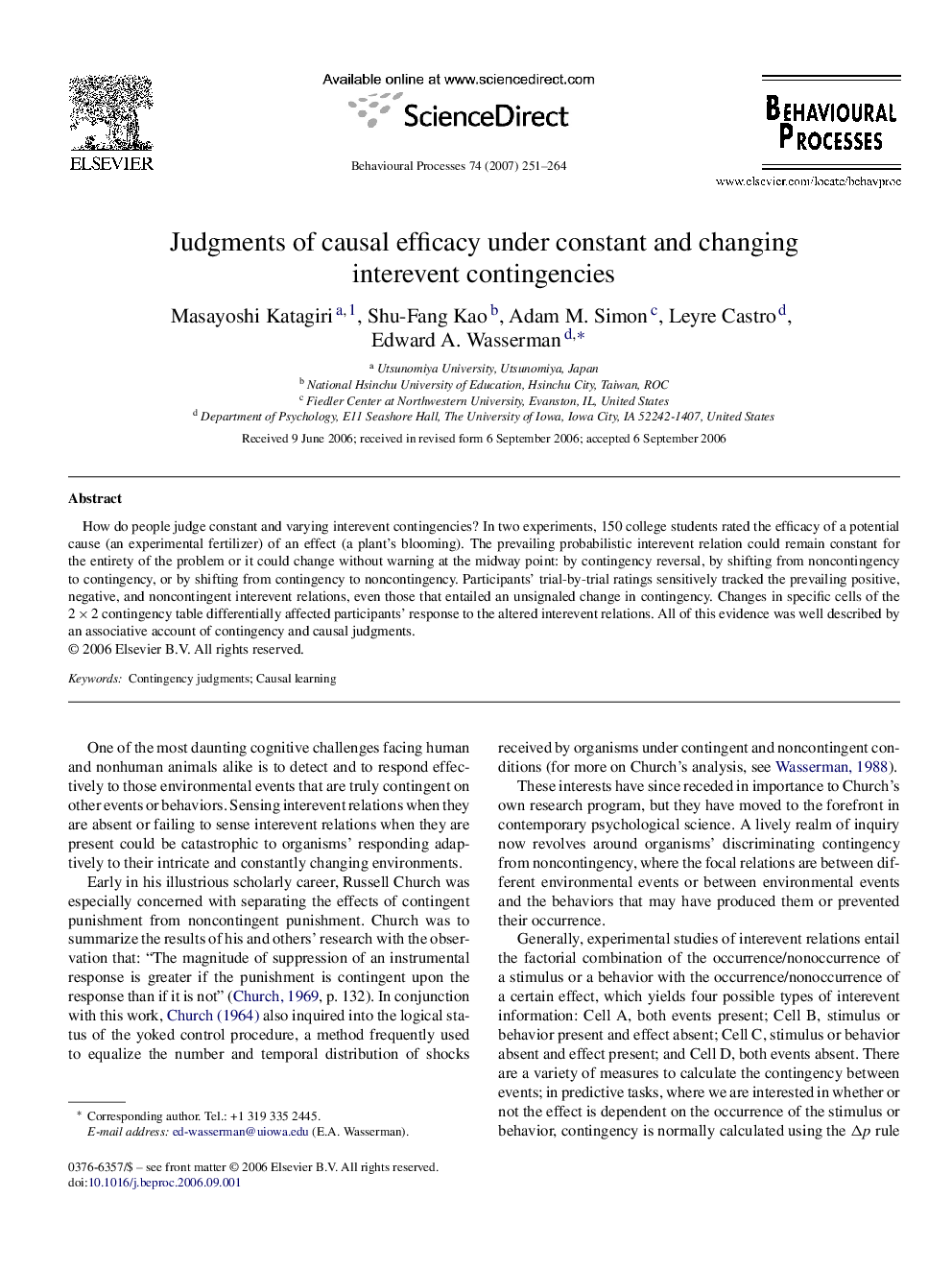| Article ID | Journal | Published Year | Pages | File Type |
|---|---|---|---|---|
| 2427773 | Behavioural Processes | 2007 | 14 Pages |
How do people judge constant and varying interevent contingencies? In two experiments, 150 college students rated the efficacy of a potential cause (an experimental fertilizer) of an effect (a plant's blooming). The prevailing probabilistic interevent relation could remain constant for the entirety of the problem or it could change without warning at the midway point: by contingency reversal, by shifting from noncontingency to contingency, or by shifting from contingency to noncontingency. Participants’ trial-by-trial ratings sensitively tracked the prevailing positive, negative, and noncontingent interevent relations, even those that entailed an unsignaled change in contingency. Changes in specific cells of the 2 × 2 contingency table differentially affected participants’ response to the altered interevent relations. All of this evidence was well described by an associative account of contingency and causal judgments.
